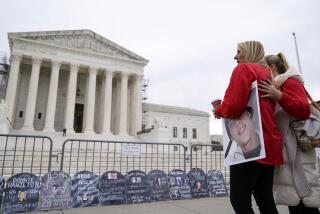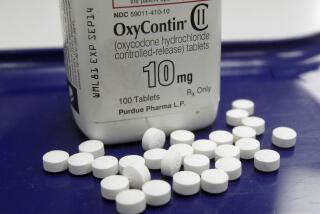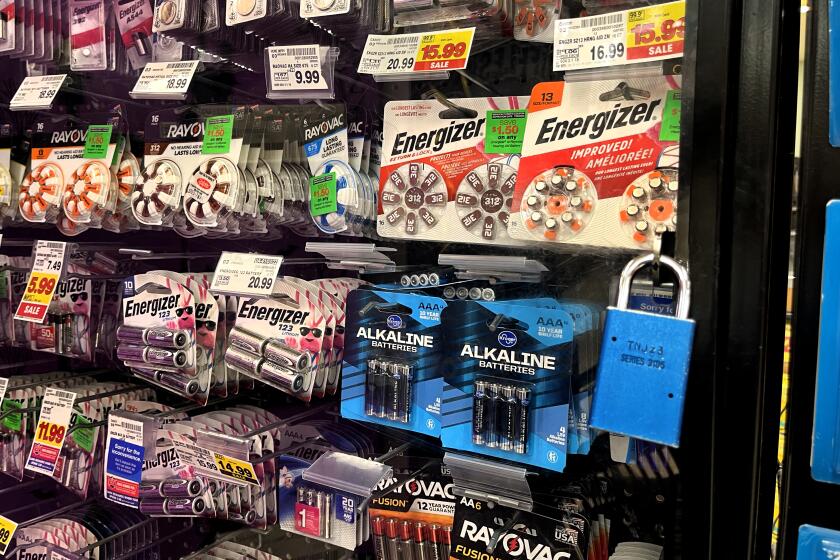Op-Ed: Who is responsible for the opioid crisis, and who ultimately pays?

In 2013, I was researching a book about the opioid epidemic and found myself with a lawyer touring a neighborhood known as the Bottoms in the town of Lucasville in southern Ohio.
The Bottoms is a neighborhood of poor people living in trailers and small, rough houses, and it is flooded every so often by the Scioto River, which runs nearby. Among the things that had mangled the lives of folks in the Bottoms was addiction to what everyone by then called “OC.” OC was an abbreviation for OxyContin, the narcotic prescription pain pill sold with what we now know was historic flagrancy by the Connecticut company Purdue Pharma, owned by the Sackler family.
From the Bottoms had come some of the country’s first plaintiffs in lawsuits against Purdue. However, none of these nor other lawsuits had prospered; opioids had a way of turning every plaintiff into what a jury would view as a conniving, thieving, child-neglecting junkie.
Meanwhile, few families anywhere, of any economic class, wanted to speak about their loved ones’ addictions, their repeated treatments, their street lives and overdose deaths. They were ashamed and they hid, certain that they were alone.
So I remember walking the Bottoms convinced that the Sacklers were impervious to legal reproach. They were anonymous members of the American One Percent. Forbes later named them one of the country’s wealthiest families, eclipsing the Rockefellers, due entirely, the magazine reported, to sales of the OC that damaged folks in the Bottoms of Lucasville, Ohio.
Indeed, by the time my book — “Dreamland: The True Tale of America’s Opiate Epidemic” — was released in April 2015, I was used to national silence on the issue. I knew of only three lawsuits against the drug companies that sold opioids — brought by counties and on hold.
Then, to my astonishment, the silence broke. That year, families began to emerge from the shadows. Obituaries began to tell the truth. Soon lawsuits against drug companies ballooned to more than 2,600, including one from every attorney general in the country. Massachusetts was the first to sue the Sacklers by name, and other states followed.
I remembered the Bottoms when I heard the recent resolution to lawsuits brought by 15 state attorneys general. Purdue, as we know it, would cease to exist. The family would put up $4.5 billion to those states for treatment and prevention. Many millions of internal documents from Purdue and its Sackler-dominated board would be made public online.
Massachusetts Atty. Gen. Maura Healey had led this group of states. She blamed the “billionaire Sacklers” for creating the opioid epidemic through aggressive sales of OC, calling them “villains for the history books.”
OxyContin helped ignite the new heroin market that expanded as prescription pain pills spread coast to coast. Before OC, opioids came mixed with acetaminophen to lessen the chance of abuse. Acetaminophen did damage to the liver and kidneys, so most folks never developed an addiction desperate enough to send them to heroin. Until OxyContin. It came with no abuse deterrent and took patients up to high daily doses very quickly. Once they lost their insurance or a doctor cut them off, they had nowhere to turn but to cheap, potent Mexican heroin.
The Sacklers, meanwhile, took hundreds of millions of dollars from Purdue every year — some $4 billion in total — which the company could have used to fund R&D and diversify away from opioids. Yet no amount of cash seemed ever enough for the Sackler board members. They flogged their sales force to ever-greater effort.
Key to all this, as well, I believe, is a healthcare system that incentivizes profitable pills and pill-taking over wellness. Purdue was hardly alone; many other companies are culpable as well. Still, it was Purdue and the Sacklers who took a product — an opioid — that is capable of miraculous good and hawked it like an over-the-counter medication.
Across America, people with enough to deal with watched as loved ones grew addicted and died from drugs intended as treatment for work injuries, car accidents, or wisdom tooth extractions.
My hunch is that the millions more documents to be made public will further pixelate that story.
To me, the Sacklers personified the Opioid Era in America — our latest Gilded Age, in which the pursuit of money was divorced from any moral compass or concern for town and neighborhood.
Yet as deplorably as Sackler family members are alleged to have behaved, this epidemic was too complex for one group to have created. None of this would have been possible without us — American healthcare consumers. Part of the story, say doctors I’ve spoken to, was that we pushed back when they suggested we didn’t need narcotics for a lot of what ailed us, that we needed to work at our own wellness. We didn’t want to hear it. We too were part of the Opioid Era.
In a larger sense, the epidemic’s deeper roots lie in our isolation and our destruction of community — in wealthy neighborhoods and poor ones alike. We spent 40 years shredding community, exalting the private sector. We watched as jobs left and towns staggered, defenseless to whatever came next, which turned out, by the late 1990s, to be pain pills prescribed by doctors. All of us were made as vulnerable as those workers and the communities from which the opioid epidemic spread.
The money Purdue Pharma and the Sackler family are putting up seems to me small potatoes given the incalculable damage. Opioid addiction, meanwhile, has morphed into an epidemic of addiction to synthetic drugs produced in Mexico.
Still, despite its limitations, the Purdue Pharma settlement is an example of legal change created by grass-roots pressure, in part from typically voiceless places like southern Ohio.
Within it is the epidemic’s most important lesson: Our defense against economic forces like Purdue Pharma is to understand that we are best together — out of the shadows and in community.
For it’s a radical thing: what happens when people stand up to power and step into the open, understanding that they are not alone.
Sam Quinones, a former Los Angeles Times reporter, is the author of “Dreamland: The True Tale of America’s Opiate Epidemic” and “The Least of Us: True Tales of America and Hope in the Time of Fentanyl and Meth,” which will be released in October.
More to Read
A cure for the common opinion
Get thought-provoking perspectives with our weekly newsletter.
You may occasionally receive promotional content from the Los Angeles Times.






